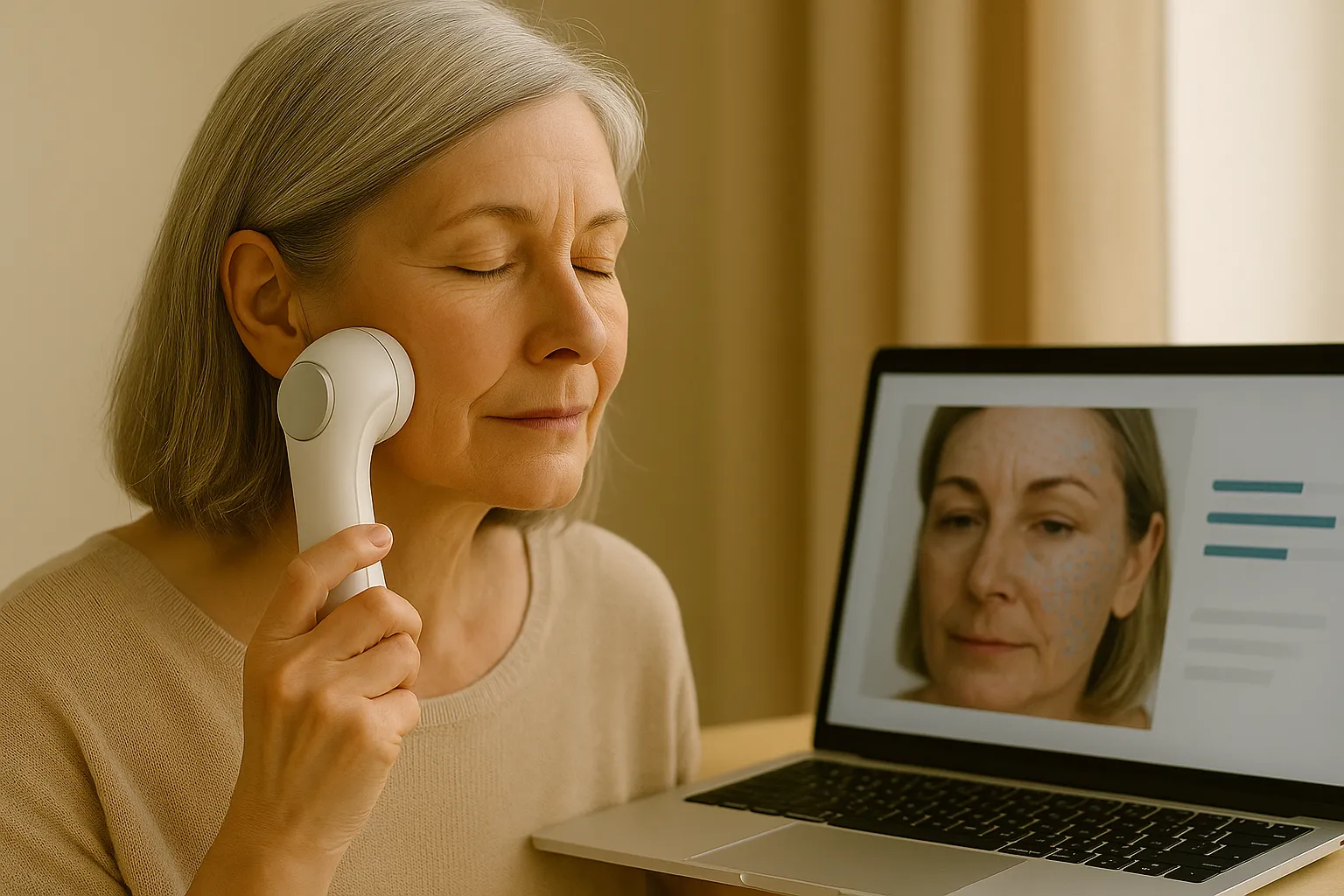Beauty has always reflected its era. Once it was shaped by mirrors and brushes, then by cameras — and now, by algorithms. Artificial intelligence no longer just observes the skin; it learns to understand it. Today, the beauty industry enters a new phase, where “care” becomes a dialogue between human and system — one that sees more than we do ourselves.
Skin as Data: What AI Actually Sees
Computer vision algorithms can recognize not only texture or tone, but also micro-signals — inflammation, barrier damage, micro-expressions. With machine learning, AI now predicts aging patterns, tracks hydration levels, evaluates pores, pigmentation and even subtle hormonal changes through microvascular mapping.
A recent Oxford University study confirmed that AI systems can analyze skin hydration, acne and sensitivity, track improvements and generate personalized recommendations. These tools are already used both in clinics and in at-home apps for real-time skin monitoring.
Just like in our article “Mood Molecules: How Stress and Dopamine Shape Your Skin”, where we explored the biochemical link between emotion and complexion, AI is learning to detect invisible cues — micro-inflammation, circulation shifts, oxidative stress. The machine no longer sees only a wrinkle, but the reason behind it.
How AI-Based Skincare Personalization Works
Here’s what the process looks like today:
- The user takes a facial photo via a brand app or in-store scanner (for instance, Revieve AI Skincare Advisor).
- The AI analyzes over a thousand parameters: texture, pore depth, pigmentation, hydration, tone and even micro-swelling.
- It compares the data with a database containing thousands of faces across ethnicities and climates, then creates a personalized plan — active ingredients, concentrations, application order.
- The app suggests: “Morning — antioxidant essence with peptides; night — glycine complex and ceramide barrier cream.”
- After 1–2 weeks, the algorithm adjusts recommendations based on new photos — it learns alongside your skin.
Brands like L’Oréal, Shiseido, Revieve and Perfect Corp are already integrating such platforms. L’Oréal even developed the Perso device — a smart home gadget that analyzes skin condition, humidity and pollution levels to dispense a fresh skincare or foundation blend daily. It’s a real example of adaptive, AI-driven beauty.
When Algorithms Meet Emotion
Artificial intelligence learns fast, but it still lacks one thing — empathy. In beauty, this matters deeply. Skin is not only an organ; it’s an emotional surface. It mirrors fear, stress, affection and fatigue. That’s why even the most advanced formulas don’t work equally for everyone — beauty is as much about mood as it is about molecules, as we wrote in “When Calm Brings No Joy”.
AI is now attempting to sense this too. In Japan, prototypes of “emotional cameras” analyze micro-muscle movements and eyelid tremors to gauge stress. The algorithm then recommends not just skincare, but calming textures or scents tailored to emotional state — the first steps toward emotionally aware cosmetology.
Market and Technology: What Has Already Been Done
According to InsightAce Analytic, the global AI beauty market was valued at US $ 4.43 billion in 2024 and is projected to reach US $ 27.65 billion by 2034. Applications now span four main directions:
- AI skin analysis — automated diagnostics and tracking of skin conditions via photo or video. Clinics use systems that identify acne, redness and photoaging with higher precision than the human eye.
- Formula personalization — algorithms select the most effective ingredient combinations. A SciQST study found that AI can test up to 50 000 ingredient variations per hour.
- Generative design — creating new products, textures and packaging through generative AI models.
- Aging prediction — analytics that forecast skin changes 5–10 years ahead, enabling truly preventive skincare.
However, researchers on Arxiv.org warn that face-scanning AI tools may amplify self-objectification and lower self-esteem. Hence, ethical design in beauty tech is as crucial as innovation itself.
Ethics, Data and the Future of Beauty
When an algorithm knows your skin better than you do, one question arises — who owns the data? High-resolution biometric images, skincare history, even hormonal patterns — these are deeply personal. Leading brands like Shiseido and L’Oréal now implement “ethical AI” principles: limited data retention, transparent algorithm logic, and user control over digital skin profiles.
This marks the rise of “aesthetic ethics”: balancing technology that enhances with humanity that defines. Beauty must remain warm, not mechanical.
Humanity as the Ultimate Luxury
The paradox of the AI age is that it makes humanness the rarest luxury. Algorithms can write, draw, and even design skincare — but they cannot create tenderness. The future of beauty lies not in rejecting AI, but in harmony with it: precision by technology, meaning by touch.
Perhaps the best response to progress is returning to the simple — as in our article “Sunday Rituals: Energy Recovery”, where beauty begins with a slow gesture of self-care. No algorithm will ever love your skin the way you can.
AI has already entered cosmetology — but it’s still up to us to decide what story it tells: one about control or one about harmony.

